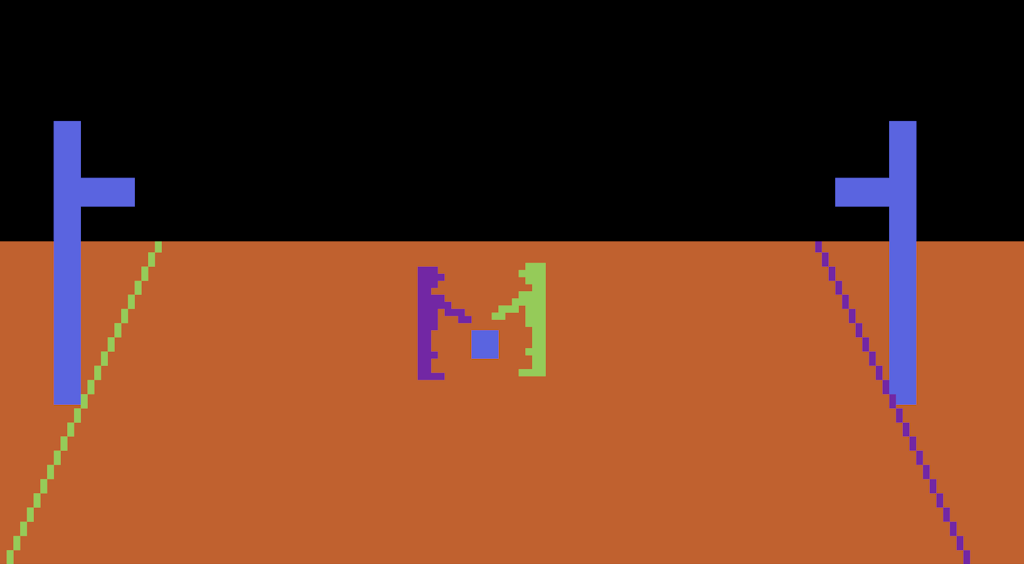
Console Gaming History Adventure: 1978
Hi again! It’s time for one more article in my “Console Gaming History Adventure” series before I’m officially caught up on writing about my experiences, and can get back to actually playing games! This time, we’re following up on 1977 by covering 1978. This year brings us 75 new games to play with across 51 new cartridges for 5 different gaming consoles! Things are heating up now!
New Consoles
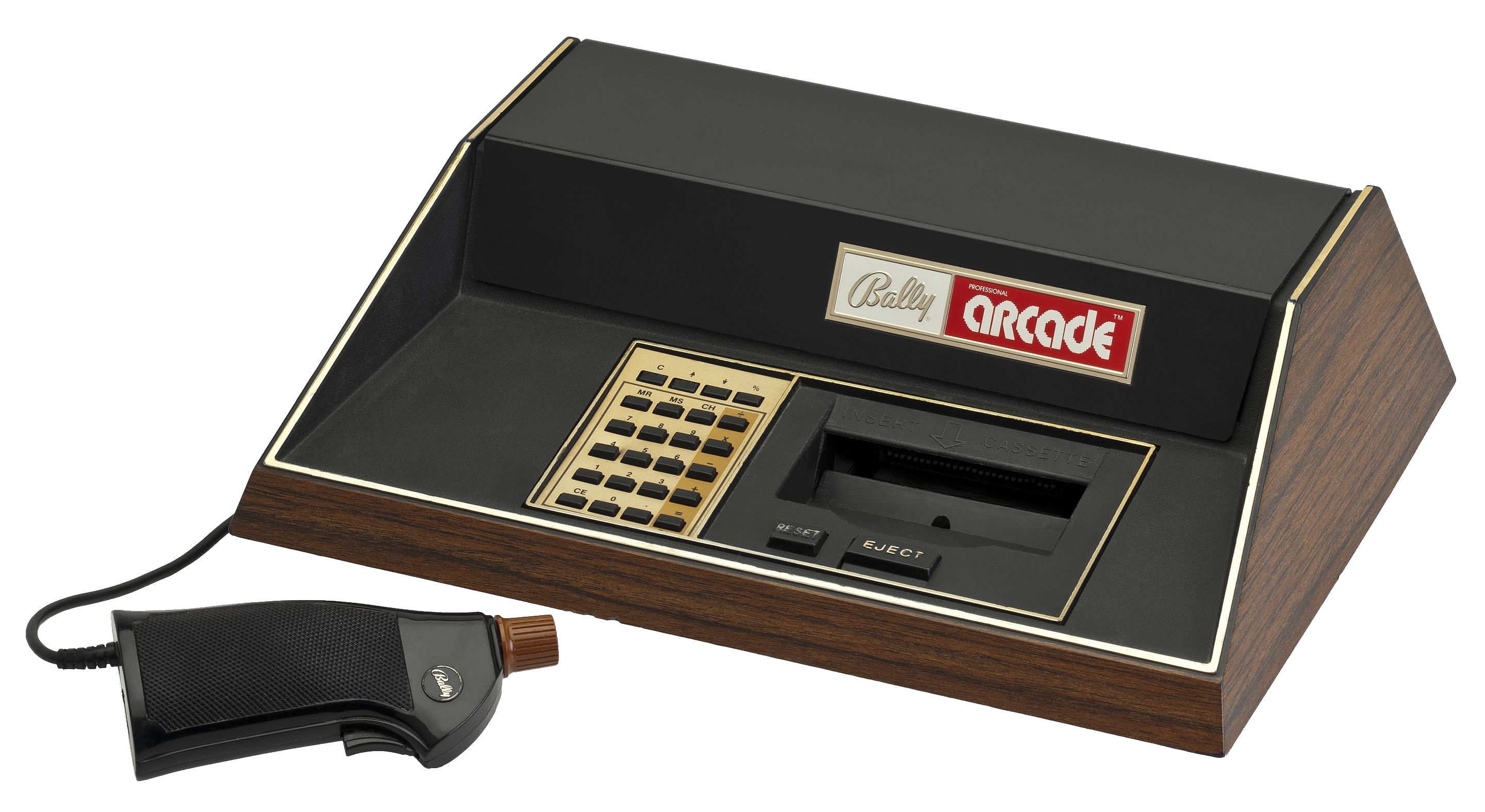 We have several new consoles to talk about this year, but one of them, the Bally Professional Arcade, was originally supposed to have been released in 1977. Manufacturing delays meant it wouldn’t be until April of 1978 that you could finally get it though, so you couldn’t play it or any of the games for it completed in 1977 until this year. The Bally Professional Arcade was incredibly powerful for its time, with up to 4KB (4096 bytes) of base RAM – four times that of the Atari VCS! Although its higher display mode of 320×204 was almost never used, the lower resolution display mode tended to look overwhelmingly more detailed than the Atari VCS because it wasn’t necessary for it to used double-pixel graphics for anything. But with an introductory price of 299USD (1,476.93USD in today’s money), the thing was crazy expensive! 😳 It was also marketed poorly, handed off to another company a year after its release (who didn’t rerelease it until 1981), and had its name changed four times (Bally Home Library Computer > Bally Professional Arcade > Bally Computer System > Astrocade). Ultimately it never really caught on like the more successful systems and remained an obscure outlier for its short life with a very limited selection of games. That’s a shame because it offers the best graphical experience by far out of any of the consoles released around the same time, though a lot of games seem to rely on a hideously garish color scheme, probably for some technical reason I don’t understand. 🫤
We have several new consoles to talk about this year, but one of them, the Bally Professional Arcade, was originally supposed to have been released in 1977. Manufacturing delays meant it wouldn’t be until April of 1978 that you could finally get it though, so you couldn’t play it or any of the games for it completed in 1977 until this year. The Bally Professional Arcade was incredibly powerful for its time, with up to 4KB (4096 bytes) of base RAM – four times that of the Atari VCS! Although its higher display mode of 320×204 was almost never used, the lower resolution display mode tended to look overwhelmingly more detailed than the Atari VCS because it wasn’t necessary for it to used double-pixel graphics for anything. But with an introductory price of 299USD (1,476.93USD in today’s money), the thing was crazy expensive! 😳 It was also marketed poorly, handed off to another company a year after its release (who didn’t rerelease it until 1981), and had its name changed four times (Bally Home Library Computer > Bally Professional Arcade > Bally Computer System > Astrocade). Ultimately it never really caught on like the more successful systems and remained an obscure outlier for its short life with a very limited selection of games. That’s a shame because it offers the best graphical experience by far out of any of the consoles released around the same time, though a lot of games seem to rely on a hideously garish color scheme, probably for some technical reason I don’t understand. 🫤
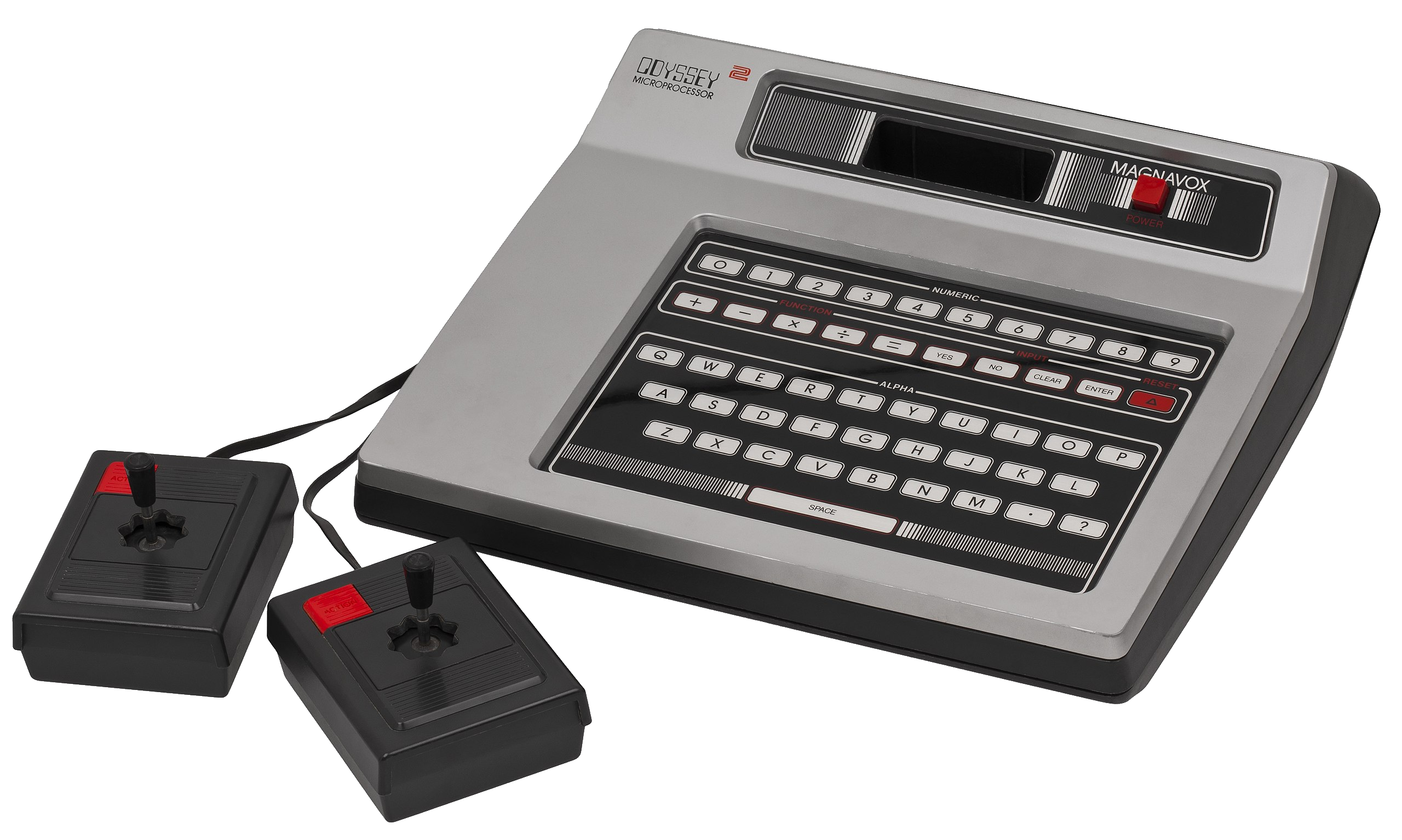 Later, in September, the Magnavox Odyssey² entered the scene, which was designed to be the successor to the Magnavox Odyssey Generation 1 console. The Odyssey²’s graphical capabilities were actually slightly worse than the Atari VCS from what I’ve been able to gather. But it was at least a tiny bit cheaper than the VCS at 179USD (857.48 in today’s money), and did come with a simple membrane keyboard that was theoretically for typing but was mostly used to choose game options when starting up a cartridge. The Odyssey² was marketed as a more wholesome, educational system than its competitors. From what I can see from the games released this year, it looks like it did have a higher ratio of educational titles for teaching kids math and reading skills, but educational or not, the games are overall pretty awful. While it does have its own unique charm, including a “voice module” that would be released later, and a shared library of little graphics its different games could access, it’s not a mystery to me why it wasn’t nearly as successful as the Atari VCS. It did at least manage for some time to secure a solid third place in the market though, behind the VCS and a console released next year called the “Intellivison”.
Later, in September, the Magnavox Odyssey² entered the scene, which was designed to be the successor to the Magnavox Odyssey Generation 1 console. The Odyssey²’s graphical capabilities were actually slightly worse than the Atari VCS from what I’ve been able to gather. But it was at least a tiny bit cheaper than the VCS at 179USD (857.48 in today’s money), and did come with a simple membrane keyboard that was theoretically for typing but was mostly used to choose game options when starting up a cartridge. The Odyssey² was marketed as a more wholesome, educational system than its competitors. From what I can see from the games released this year, it looks like it did have a higher ratio of educational titles for teaching kids math and reading skills, but educational or not, the games are overall pretty awful. While it does have its own unique charm, including a “voice module” that would be released later, and a shared library of little graphics its different games could access, it’s not a mystery to me why it wasn’t nearly as successful as the Atari VCS. It did at least manage for some time to secure a solid third place in the market though, behind the VCS and a console released next year called the “Intellivison”.
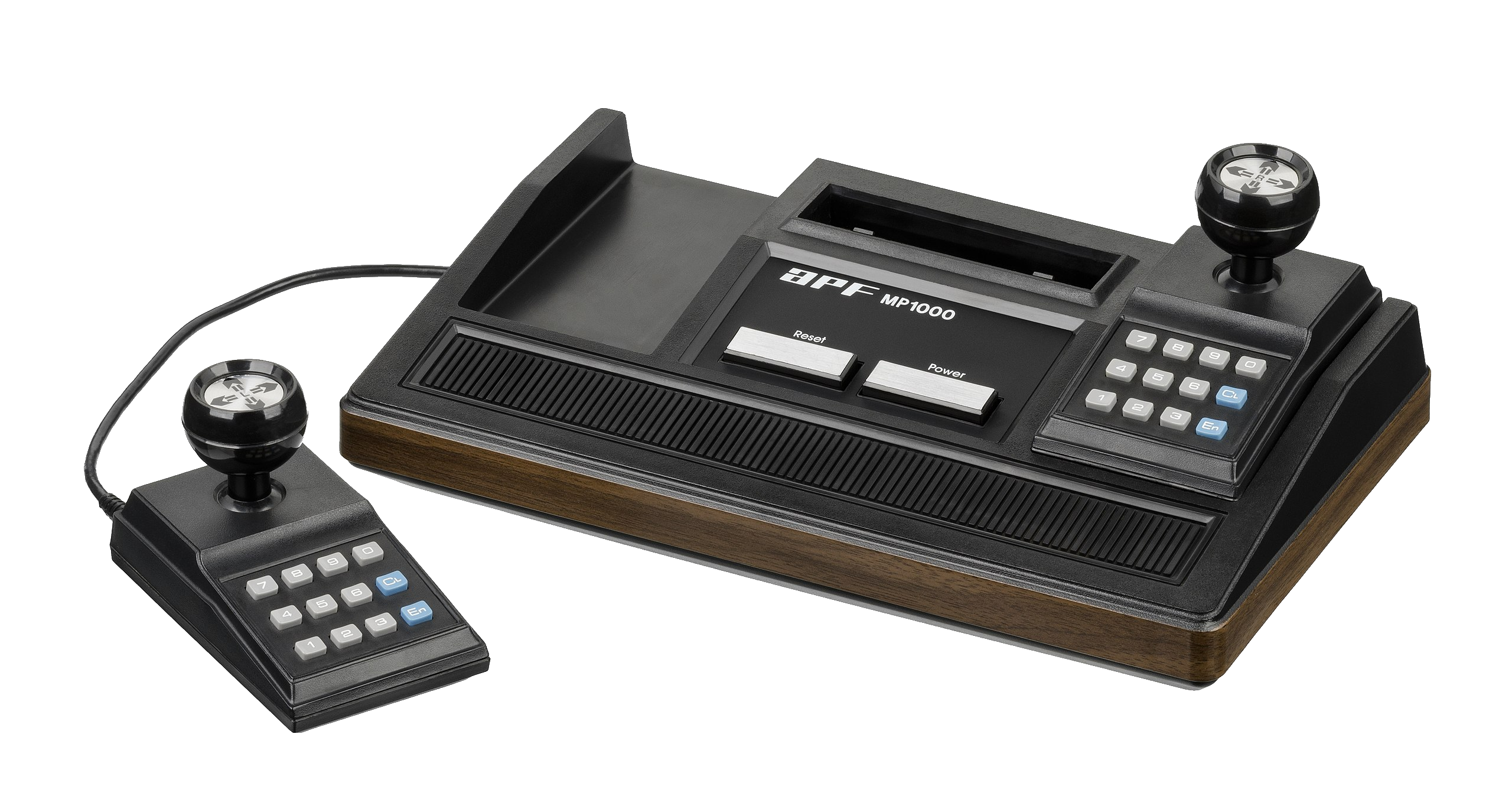 The only other console I can play games for that was released this year is the APF M-1000/MP-1000. This obscure console was originally meant as a starter pack for people who would later want to upgrade it into being a full home computer called the “APF Imagination Machine”. It wasn’t very successful and while I hate to sound mean like this, it really didn’t deserve to be. 😕 It did have a fairly nice maximum screen resolution of 256 x 192, but not much to do with it, since the selection of games was absolutely terrible. I don’t have a single game to recommend that was any good, and I quickly got to the point of letting out a sigh of frustration when it was time to try another game for this thing in my list because they were just invariably super-confusing and awful. At least it was a lot cheaper than the other options at only 130USD (622.75 today) for the console, but I really think you got what you paid for.
The only other console I can play games for that was released this year is the APF M-1000/MP-1000. This obscure console was originally meant as a starter pack for people who would later want to upgrade it into being a full home computer called the “APF Imagination Machine”. It wasn’t very successful and while I hate to sound mean like this, it really didn’t deserve to be. 😕 It did have a fairly nice maximum screen resolution of 256 x 192, but not much to do with it, since the selection of games was absolutely terrible. I don’t have a single game to recommend that was any good, and I quickly got to the point of letting out a sigh of frustration when it was time to try another game for this thing in my list because they were just invariably super-confusing and awful. At least it was a lot cheaper than the other options at only 130USD (622.75 today) for the console, but I really think you got what you paid for.
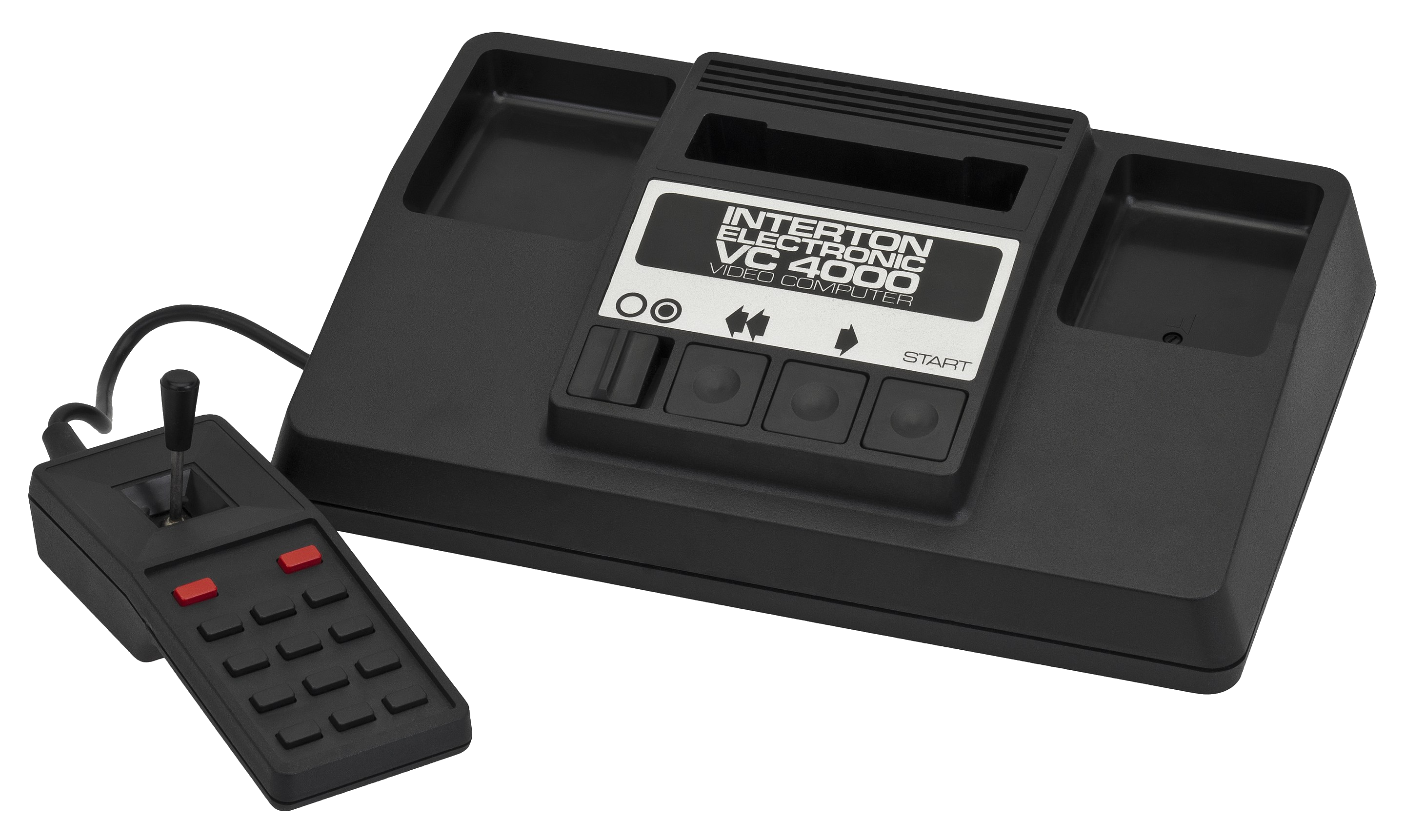 (NO ACCESS) Also released this year were the first of whole mess of different console clones that had no common name but shared the same Signetics 2636 video technology, had a similar controller design, and were mostly compatible with the same games. This includes the “Interton VC (Video Computer) 4000” (pictured) and the “1292 Advanced Programmable Video System“. This confusing fleet of consoles would be released in different places across Europe throughout 1978 and 1979. None of them had any real success – I guess we can consider this a symptom of the market trying to figure out how cartridge-based gaming consoles would actually work in the long run!
(NO ACCESS) Also released this year were the first of whole mess of different console clones that had no common name but shared the same Signetics 2636 video technology, had a similar controller design, and were mostly compatible with the same games. This includes the “Interton VC (Video Computer) 4000” (pictured) and the “1292 Advanced Programmable Video System“. This confusing fleet of consoles would be released in different places across Europe throughout 1978 and 1979. None of them had any real success – I guess we can consider this a symptom of the market trying to figure out how cartridge-based gaming consoles would actually work in the long run!
Note the controller design of the last two images, with their large grid of confusing and non-ergonomic buttons. This would be the go-to choice for controller design going forward for the rest of Generation 2. I have no idea why it was so popular but I personally find it really annoying! 😖
Returning Consoles
There weren’t nearly as many games released for the Fairchild Channel F this year, but there were some (7 new cartridges compared to 11 last year) so the console was still going.
I think this is the year that the Atari VCS took its dominant position for the rest of the generation but I don’t really know. I haven’t been able to find specific, over-time usage share statistics for these consoles. The Atari VCS did have a higher number of new cartridges this year (12) over the Channel F.
Noteworthy Games
While there are a lot more games to choose from this year, it’s all about quantity over quality, so I don’t really have more in the way of good games to put here. 😐 At least with the introduction of the Bally Professional Arcade, some of these games have much, much better graphics than what we’ve had access to until now!
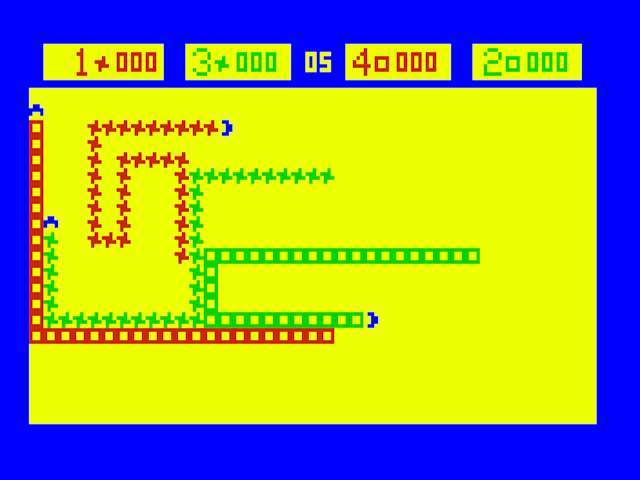 On that note, I think my favorite game for the Bally Professional Arcade would be Checkmate, which is one of two games (along with “Gunfight”) built into the console itself, and you can always choose it as an option no matter what cartridge you have inserted. You’d think it was a chess game, but you’d be wrong. In fact it plays very similarly to the “Surround” for the Atari VCS, which I had highlighted in the 1977 article, where you let out trails and have to force your opponent to hit a trail before they can do the same to you. This time though, there are four different players on the screen, and you can have all your opponents controlled by the computer. The sound effects of this game are weirdly sad and creepy, which I find kind of amusing for some reason. 🤷🏻♀️
On that note, I think my favorite game for the Bally Professional Arcade would be Checkmate, which is one of two games (along with “Gunfight”) built into the console itself, and you can always choose it as an option no matter what cartridge you have inserted. You’d think it was a chess game, but you’d be wrong. In fact it plays very similarly to the “Surround” for the Atari VCS, which I had highlighted in the 1977 article, where you let out trails and have to force your opponent to hit a trail before they can do the same to you. This time though, there are four different players on the screen, and you can have all your opponents controlled by the computer. The sound effects of this game are weirdly sad and creepy, which I find kind of amusing for some reason. 🤷🏻♀️
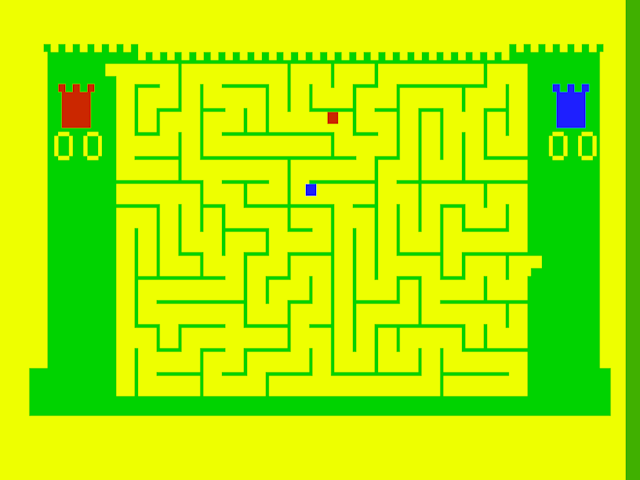 A close second for my favorite Bally Professional Arcade game this year would be Amazing Maze. I’m guessing this is based off of the 1976 arcade game “Amazing Maze” because the gameplay is identical. You and your opponent – who can be computer controlled – each control a dot, and begin at opposite entrances to the maze. The goal is to make it to the entrance your opponent started from before he can make it to the entrance you started from. You have a grace period at the start to try and figure out where to go with your eyes, and then you’re off. I particularly like the Bally Professional Arcade version of this game because it comes with such amusing and adorable graphics and sound effects. The limitations of the console means it takes a little bit to generate the maze each round before you can start, and they’ve compensated for this really cleverly with fun sound effects and animation that lets you watch the computer think up the maze! I really like how they put this together! 👍🏻
A close second for my favorite Bally Professional Arcade game this year would be Amazing Maze. I’m guessing this is based off of the 1976 arcade game “Amazing Maze” because the gameplay is identical. You and your opponent – who can be computer controlled – each control a dot, and begin at opposite entrances to the maze. The goal is to make it to the entrance your opponent started from before he can make it to the entrance you started from. You have a grace period at the start to try and figure out where to go with your eyes, and then you’re off. I particularly like the Bally Professional Arcade version of this game because it comes with such amusing and adorable graphics and sound effects. The limitations of the console means it takes a little bit to generate the maze each round before you can start, and they’ve compensated for this really cleverly with fun sound effects and animation that lets you watch the computer think up the maze! I really like how they put this together! 👍🏻
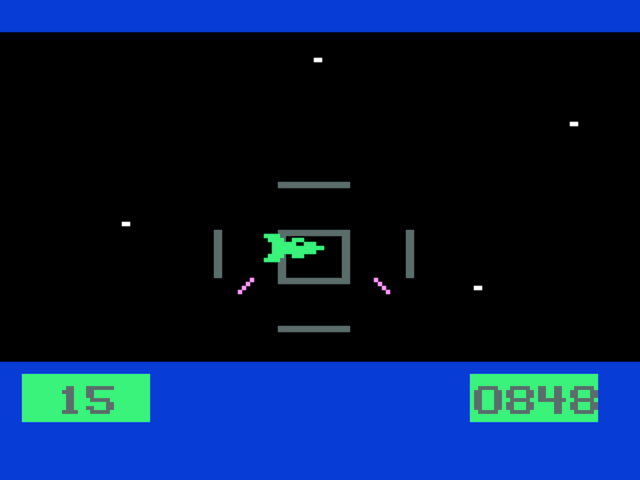 I did find one decent game for the Odyssey² this year – Cosmic Conflict, a 3d, first-person space shooter! The goal is to destroy 15 ships before your fuel runs out, with your “score” basically being how much fuel you manage to have left by the time you do this. Time uses up fuel, but so does firing a shot, so you want to try and miss as little as possible. There’s a lag between when a shot is fired and when it hits the target, so you need to time your shots properly by observing the movement of the ships. Some enemy ships will come at you and try to hurt you. You want to try and blast these before they can reach you or they’ll take a lot of fuel. If you don’t think you can make it, you can turn far away from them to escape. I liked it because it’s cool to see a 3D console game this early, and because of the complexity of trying to figure out how to maximize your remaining fuel by the end of a run. I think the ambient sound effects are well done and do a good job at portraying the eerie, quiet, ominous emptiness of outer space.
I did find one decent game for the Odyssey² this year – Cosmic Conflict, a 3d, first-person space shooter! The goal is to destroy 15 ships before your fuel runs out, with your “score” basically being how much fuel you manage to have left by the time you do this. Time uses up fuel, but so does firing a shot, so you want to try and miss as little as possible. There’s a lag between when a shot is fired and when it hits the target, so you need to time your shots properly by observing the movement of the ships. Some enemy ships will come at you and try to hurt you. You want to try and blast these before they can reach you or they’ll take a lot of fuel. If you don’t think you can make it, you can turn far away from them to escape. I liked it because it’s cool to see a 3D console game this early, and because of the complexity of trying to figure out how to maximize your remaining fuel by the end of a run. I think the ambient sound effects are well done and do a good job at portraying the eerie, quiet, ominous emptiness of outer space.
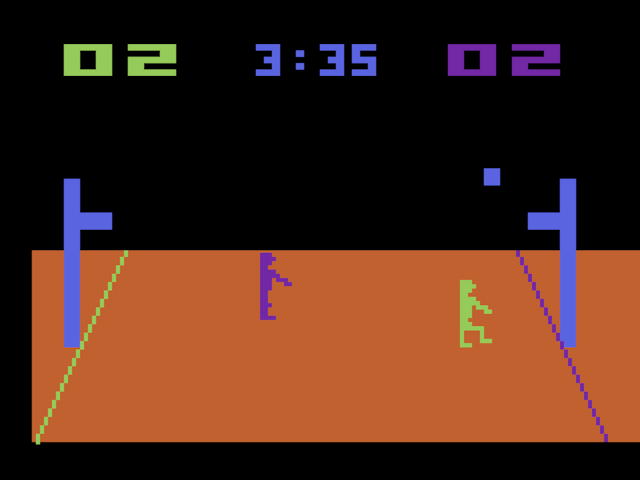 One game that really surprised me with how good it is is Basketball for the Atari VCS. I don’t normally like competitive sports games, and this game doesn’t really innovate on the idea of two people playing basketball at all, but it is just done so right! There is something so vicious and tense about the feel of the game that makes it very satisfying to play! You can use the only button on your Atari controller to throw the ball or try to catch the ball you opponent throws, but you steal the ball from your opponent just by lining up your feet with his, rather than using the button. I imagine games with the computer would get old too quickly if you played this game a lot, but there’s also an option to play with a friend.
One game that really surprised me with how good it is is Basketball for the Atari VCS. I don’t normally like competitive sports games, and this game doesn’t really innovate on the idea of two people playing basketball at all, but it is just done so right! There is something so vicious and tense about the feel of the game that makes it very satisfying to play! You can use the only button on your Atari controller to throw the ball or try to catch the ball you opponent throws, but you steal the ball from your opponent just by lining up your feet with his, rather than using the button. I imagine games with the computer would get old too quickly if you played this game a lot, but there’s also an option to play with a friend.
Meanwhile, in Arcade Land…
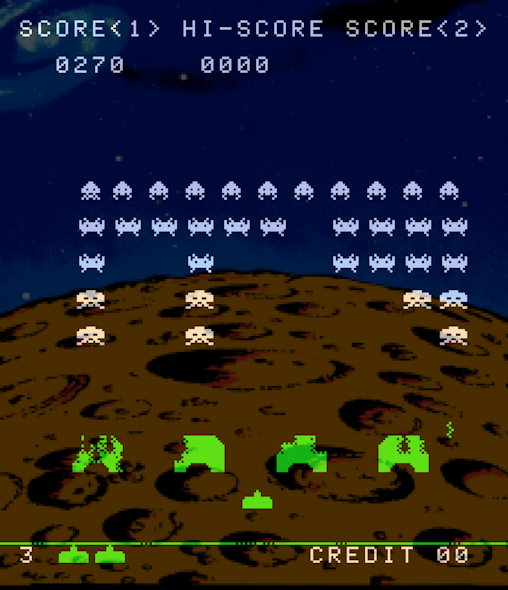 This year’s arcade pick is as easy as it comes, because 1978 is the year that the famous Space Invaders entered the scene! Space invaders is a very clever game where you have to destroy all the aliens before they make landfall, taking cover behind destructible shelters. The ambient noise is artistically powerful for such an old game, setting a horror mood and growing tension as the speed of the aliens increases the more of them you destroy.
This year’s arcade pick is as easy as it comes, because 1978 is the year that the famous Space Invaders entered the scene! Space invaders is a very clever game where you have to destroy all the aliens before they make landfall, taking cover behind destructible shelters. The ambient noise is artistically powerful for such an old game, setting a horror mood and growing tension as the speed of the aliens increases the more of them you destroy.
Space Invaders would have an enormous influence on future games for both arcades and home consoles, starting with an absolutely dizzying number of ports, pirates, and shameless copycats before the idea of increasingly interesting spins on the Space Invaders concept would morph into an entire genre of “Shoot ’em Up” video games, many of which became very famous in their own right such as “Galaga” (1981) and “1942” (1984). The difficulties involved in getting the hardware of the time to perform well with so many objects on the screen also created pressure that boosted hardware innovation as well.
For now though, the arcade games of 1978 didn’t seem all that much more sophisticated to me than the ones of 1977. One game I tried, Seawolf II, did have a full color display. Everything else, including Space Invaders, relied on colored overlays, projecting the screen onto physical backgrounds, or both to achieve color, when there was color at all. I’m still not entirely sure why color was just so slow to happen in arcade machines because it seemed to be the one thing home gaming consoles had on them for years. Maybe someone who knows can tell me in the comments?
Conclusion
Completing and publishing this article means I’m officially caught up with writing about my little project. Now I’m ready to start playing the games from 1979! Since there are 115 games (both arcade and home console) to get through, I wouldn’t expect the 1979 article to come out for a long time, but I will get to it!